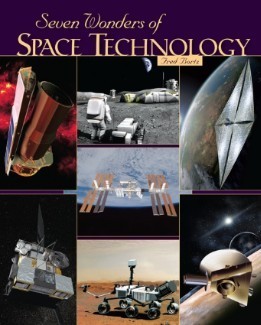Seven Wonders of Space Technology
Seven Wonders of Space Technology
By Fred Bortz
Twenty-first Century Books/Lerner, 2011
ISBN #978-0-7613-5453-6
Ages 10-14
Nonfiction
"Astronomy is humanity's oldest science. People have studies the night sky for thousands of years. Ancient monuments such as Stonehenge in England or Chichen Itza in Mexico were probably the great observatories of their time."
Seven Wonders of Space Technology takes the reader on a journey through space and the technology that allowed science to get there and explore in a way the past civilizations only dreamed about. Bortz's choices for the seven greatest space technologies stem from the popular seven wonders of the ancient world sort of lists. And he has some compelling reading in his lists.
His introduction begins with the great observatories following some background information about history, the electromagnetic spectrum, and the science of the observatories. The book continues with the International Space Station and how it came about. Satellites, the Moon with its Moon water, the Mars Rover, future study of the planets and beyond, and future technology are covered in the book. The information is fascinating and detailed, yet explained in a manner that anyone can read, learn, and enjoy.
The back matter is rich and varied. It includes a bibliography, further reading, a glossary, index, source notes, a timeline, and websites. This book is for the upper elementary grades and that hard to grab middle school age students. For reference or fun, this book makes the difficult subject of space technology accessible and interesting.
Activity
Write an explanation of the issue of water, space travel, and the Moon. Describe the problems and possible solutions to address this problem.
International Space Station site
National Science Standards: Earth in the solar system; abilities of technological design; understandings about science and technology








Shirley Smith Duke's Blog




